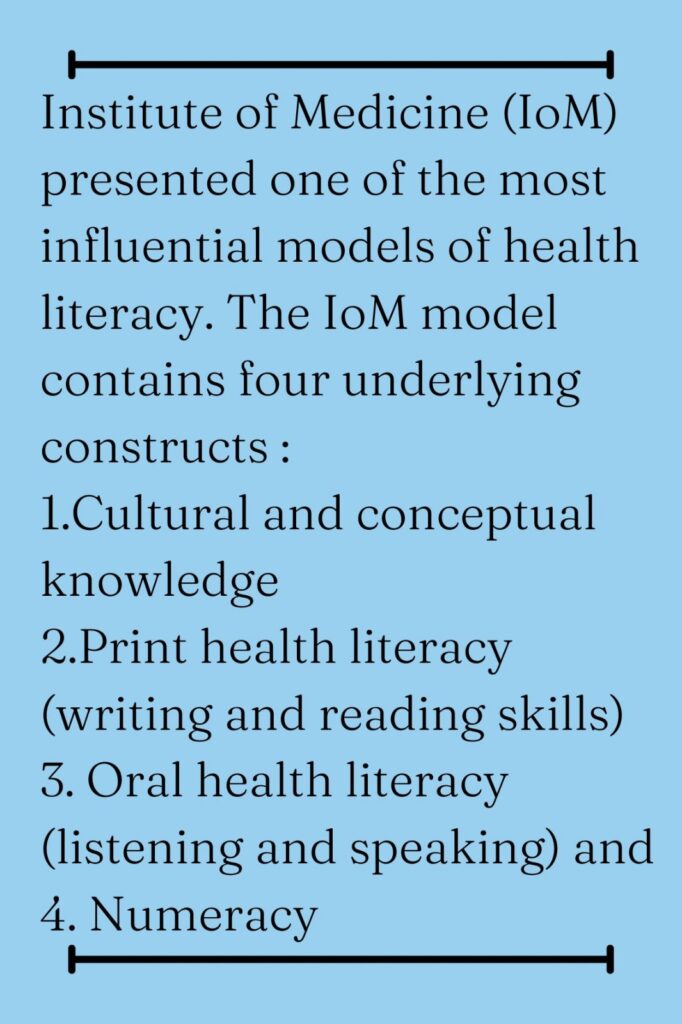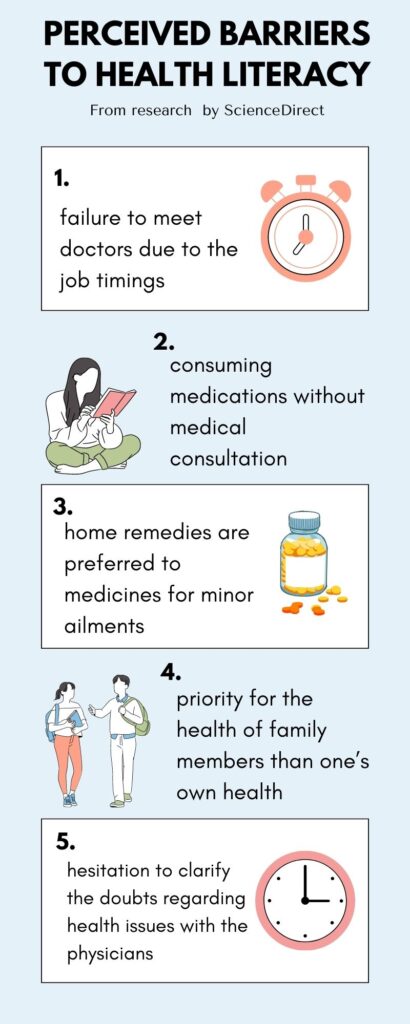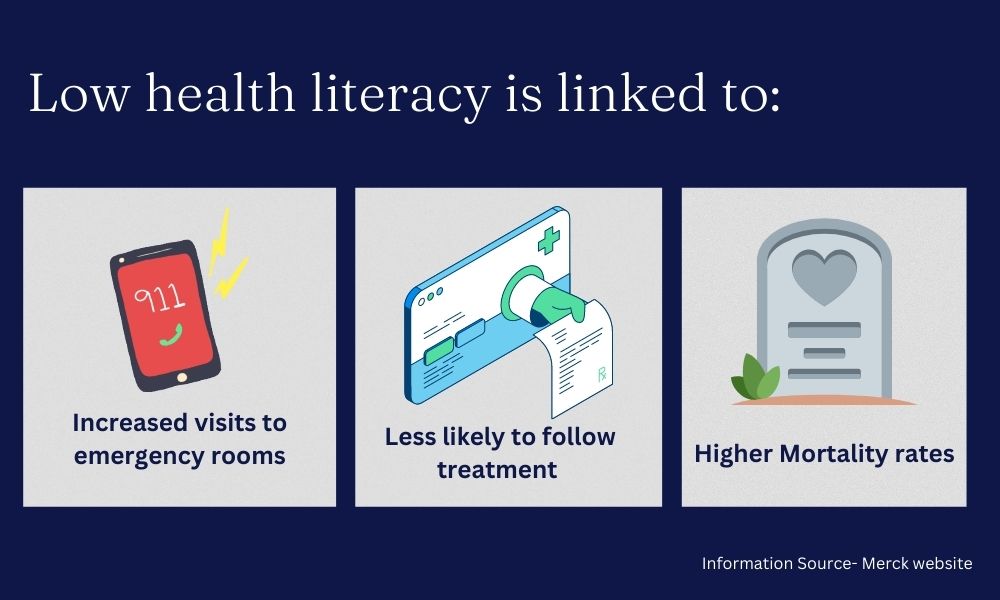A survey states that In India, at least nine out of 10 adults suffer from low health literacy.
The habit of cracking your fingers causes arthritis. Antiperspirants and deodorants can cause breast cancer. Dirty toilet seats can transmit STDs. Coffee stunts your growth and messes with your memory. You have to drink at least eight glasses of water per day. Drinking too much water causes bloating.
All these and more are old wives’ tales, but people believe in them, despite reports that debunk them. Experts say that health literacy is low in India, but is at a turning point post COVID.

Tribune India in 2019 claimed that in India, at least nine out of 10 adults suffer from low health literacy. OXFAM report suggests that India is home to the largest population of 287 million illiterate adults in the world. This amounts to 37 percent of the global total.
Radha, an engineering student said she believed a lot of these myths before a medical emergency in her family caused the loss of her loved one. “Now, I make it a point to educate myself and not live in ignorance. I think it is important to know what is good for your body and what is not and maintain a healthy lifestyle.”
Sandhya(name changed), a homemaker, who monitors her parents and in-laws medicine routines said, “I always check the medicines and ask the doctors extra questions so I know the entire situation. Educating yourself about your and your families’ health requirements is important.” She added that when one has to fill medical forms during an emergency it is better to be informed rather than staying in the dark. She said that each person can do their part by starting at the family level.
Dr. Ananth Ram, health systems specialist at Ramaiah International Centre for Public Health innovations said that health literacy leads to better risk perception. “Because of poor health literacy rate the state decides for you like –compulsory helmets, vaccines, and immunisation. – Unless health-friendly habits are enforced as laws, people are resistant to change when it comes to health or any matter,” he added.
A study conducted to assess the health literacy among adult patients seeking oral health care at a private dental hospital in Bangalore showed that about 60.4 percent of the subjects had low health literacy level, 29.4 percent average and only 10.2 percent had high health literacy level.
Experts said that COVID-19 was a wakeup call for people in realising the importance of health literacy. Mr Ram said that the recent National Health Policy lays more emphasis on health promotion. “The policy went from curative, rehabilitative to a more disease prevention and health promotion perspective. That is a change in the right direction and towards health literacy.”

Radha said that during COVID there was a lot of medical misinformation floating in the public domain through gossip, WhatsApp forwards and many such sources and people believed most of it. “Believing everything can be dangerous, people need to be literate enough to verify the information.”
Experts say health literacy involves a range of abilities, including: navigating the healthcare system which includes filling forms, finding doctors and weighing risks and benefits of medical tests and procedures. Doctors stress on the importance of getting a second opinion in case of their treatment.
Ignorance
Shehnas, a medical student studying at the Coimbatore Medical College said people react violently sometimes when they are given their diagnosis.” They had no clue as to what they are diagnosed with so they react violently and if the people had a basic understanding of their own health then this could be avoided. The doctors should also be able to gauge the situation before telling the patient their diagnosis and tell them at an appropriate time.”
“People make poor judgements because of lack of information and this can have a negative influence on their health and lives. COVID taught people that their health should come first,” said Dr Raj (name changed), a neurologist who works at NIMHANS. He also said that being ignorant when it concerns our health and well-being can be dangerous.
He added, “Overmedication and self-medicating without prescription are some consequences of not knowing enough about your health but thinking that you do.” He added that low health literacy rate increases the burden on the national and state resources as things can be prevented. Dr Raj (name changed) said, “A healthy lifestyle and diet made consciously by a person to improve their health is the way to prevent this and be more aware about your health.”
Education
Shehnas said, “The hospital I work at runs many rallies and awareness campaigns to educate people.” She added that she finds that helpful and that this could better the health literacy numbers.

Doctors said that health literacy starts at the personal level and people need to take steps on their own to educate themselves. Dr Raj (name changed) explained that educating students from a young age about some basic medical terms and conditions will be beneficial for all and help boost the health literacy level. He added that it is a long-term solution but an effective one.
Mr Ram said, “There is a significant language gap. The health literature is in English but people in India have different vernacular languages and that has to be at the forefront to promote health literacy through the communication materials.” He explained that to deliver medical courses in local language would also help bridge this gap. He believed that this will make the doctor, the medical message more relatable and more understandable.
“There is a lot of effort from the government, surely but this issue requires a long-term fix.” Mr Ram explained that the ASHA workers and anganwadis promote health awareness and are the middlemen between the community and the health professionals. They are the way the health information percolates through the system to the communities. He added that these are important steps taken by the government and that these efforts need to reflect in the final step also.




